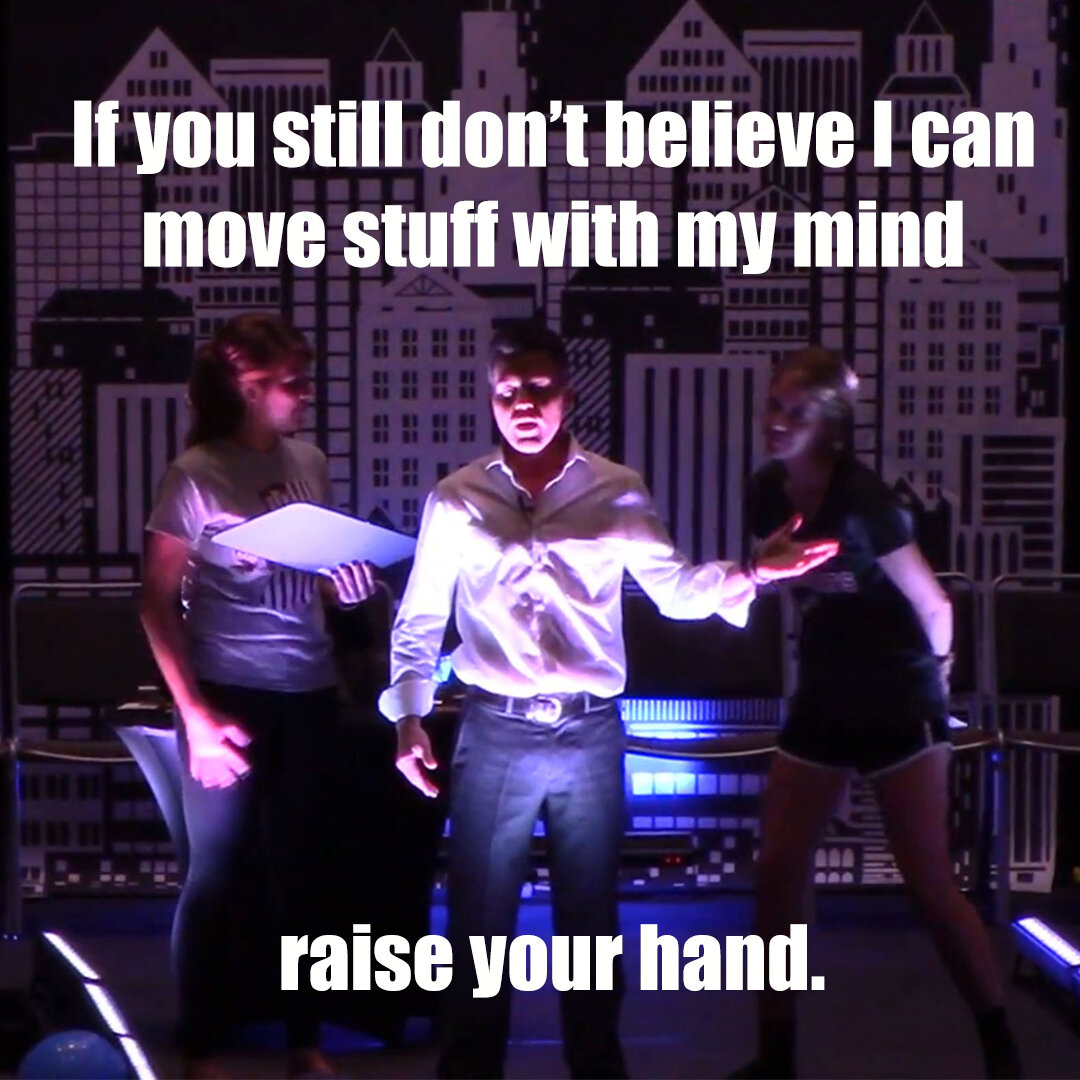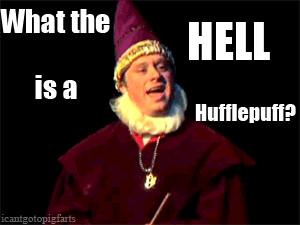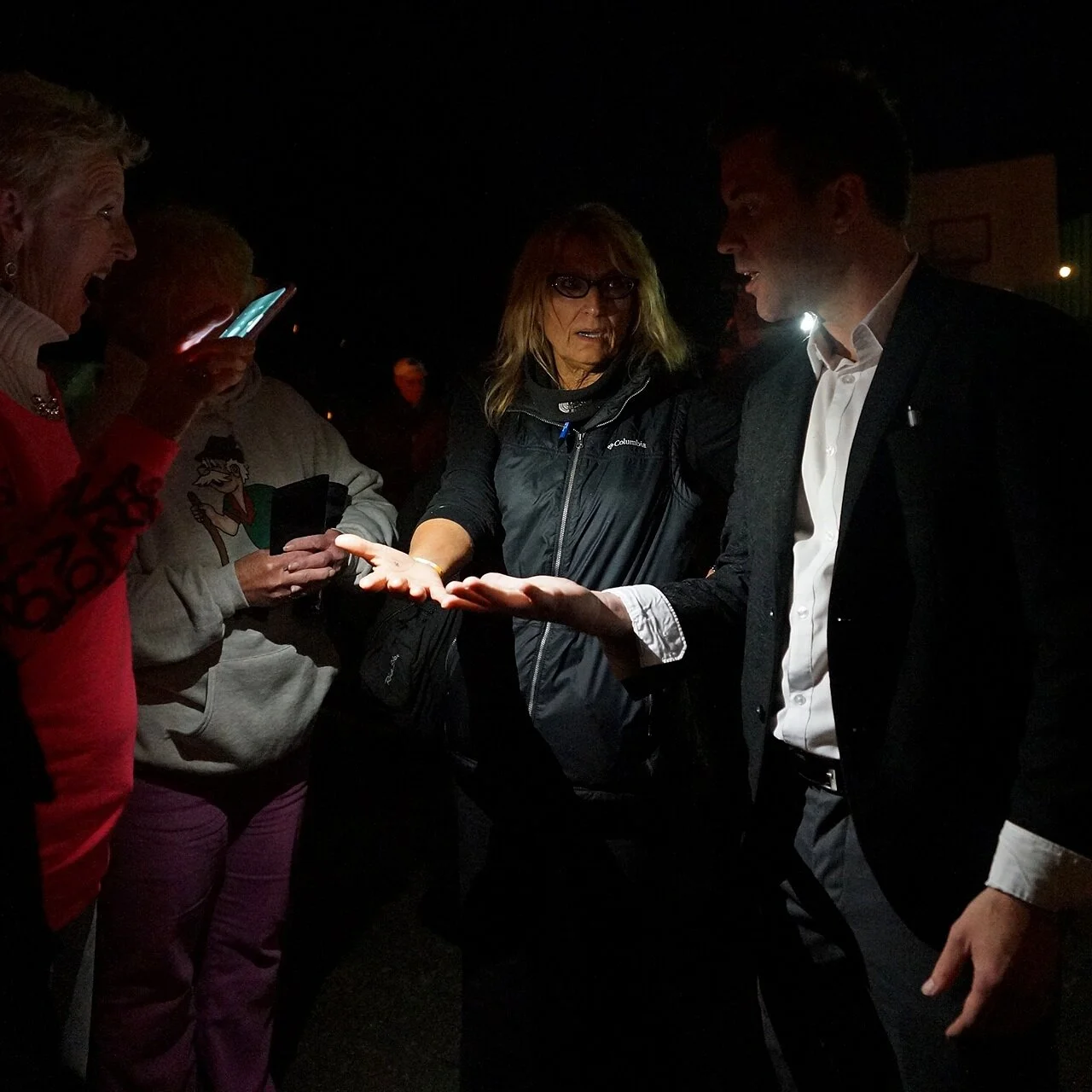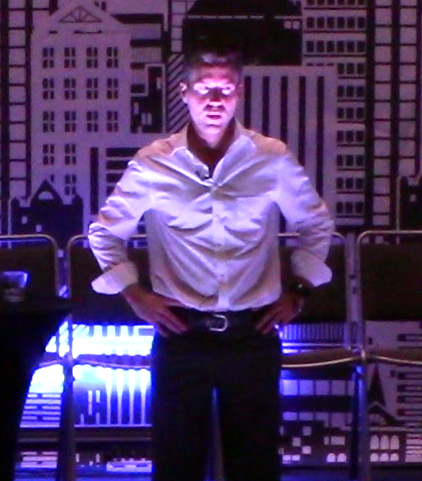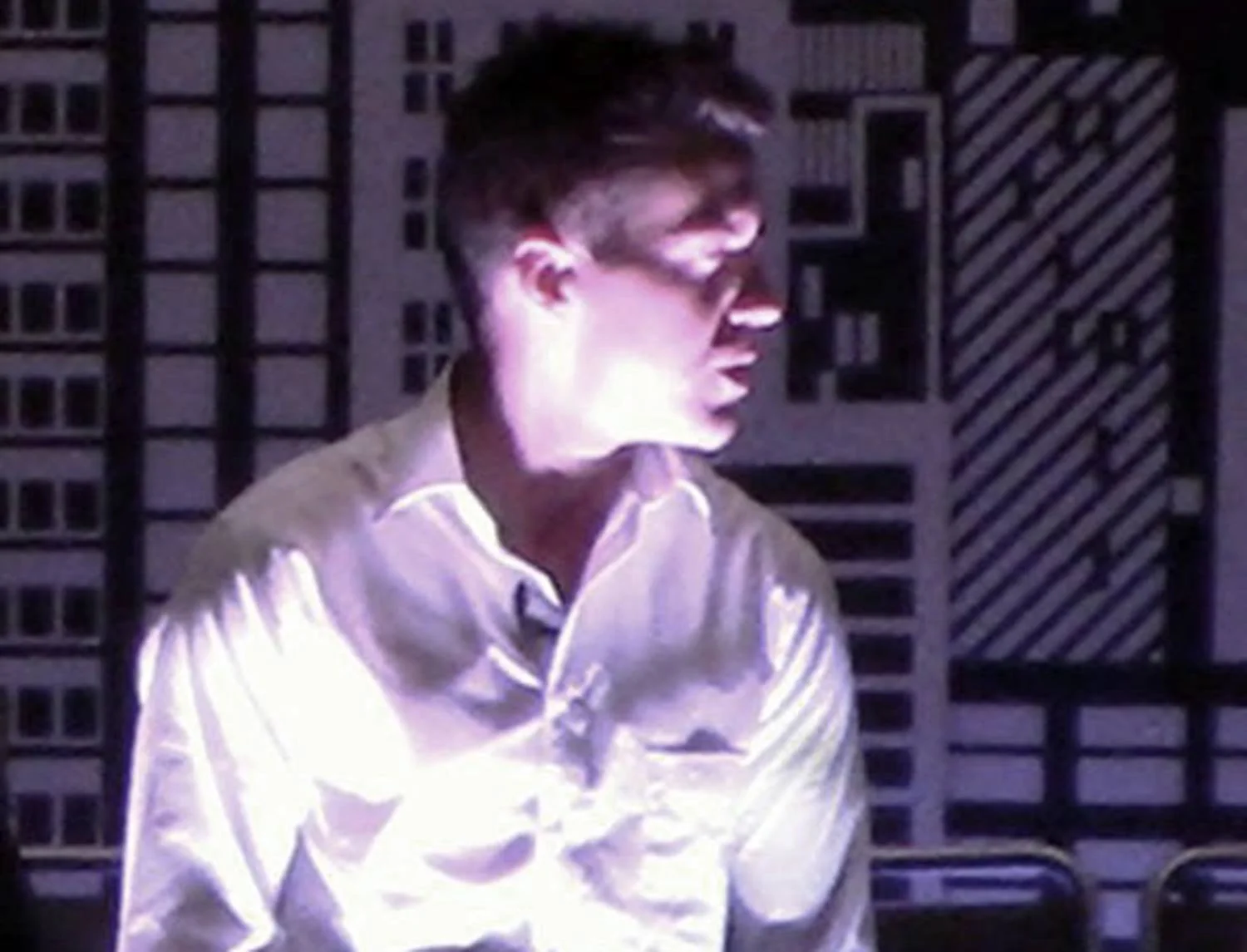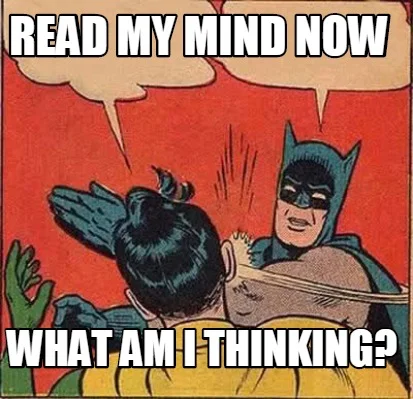How Mentalists Read Minds
A Peek into Mentalism
The Thought Readers: How Mentalists Manufacture Mind Reading
The world of mentalism is a fascinating realm where the human mind takes center stage. On this stage, perceptions, thoughts, and secrets are to the mentalist as tangible as playing cards in the hands of a magician.
A mentalist crosses the invisible landscape of your mind, hops through the labyrinth of your thoughts, predicts your decisions, and influences your behaviors.
How do mentalists do it?
What is a mentalist?
Tricks of the Mind by Derren Brown gives a glimpse into the secret techniques mentalists use to astound their audiences.
Mentalist Definition
Mentalists use psychological techniques to create the illusion of extraordinary mental abilities. Such abilities include mind-reading, precognition, superhuman memory, and rapid calculation.
A performance artist who demonstrates mental tricks for entertainment.
A magician masquerading as a mind reader.
A practitioner of the branch of magic referred to as mentalism.
"Mentalism is the silent music of the mind; Magic is the orchestra of the unseen."
Jon Finch
One of the mentalist personality traits is curiosity. Mentalists are exceptionally curious people. And exceptionally curious people tend to be exceptional readers.
The Thirteen Steps to Mentalism is “the bible of mentalism.” Corinda’s masterpiece is widely regarded by celebrated mentalists as the best book on mentalism magic. 13 Steps is the bible of mentalism and mentalists regard this book with reverence.
Mentalist Meaning
A mentalist is a performance artist who demonstrates what appears to be fantastic mental feats. These extraordinary mental effects rely on technical skill, misdirection, psychological subtleties, hypnosis (suggestion), cold reading, and showmanship to demonstrate what appears to be extraordinary mind reading, foresight, clairvoyance, and telekinesis.
Magic is appearing to do the impossible. Mentalism is actually doing the highly improbable.
Magic elicits the question, "How did you do that?" Mentalism evokes the question, "How did you know that?"
A magician offers a dazzling display for the eyes. A mentalist is the tour guide of your imagination.
Magic is doing the impossible. Mentalism is knowing the unknowable.
When a spectator views a magic show, the spectator feels surprise, wonder, and astonishment. Rarely does the performing art shift the spectator's view of how the world works.
When the magician snaps his fingers, waves the magic wand, or sprinkles woofle dust, the spectator knows the magician doesn’t really need the woofle dust.
But when spectators witness a psychic entertainer like Uri Geller or a mentalist like Koran, many are left wondering whether the mentalist has mental magic feats like clairvoyance, telepathy, ESP, is an expert at mind control, or can really read minds.
For a mentalist, the woofle dust is “body language reading” or “NLP” or even understanding human behavior or some other plausible explanation.
Spectators believe in the mentalist’s woofle dust.
Explore the world of mentalism with the 13 Steps to Mentalism DVD set.
Guided by the expert mentalist Richard Osterlind, this 6-disc collection is a goldmine of mentalism techniques, effects, and insider tips.
Whether you're new to mentalism or looking to enhance your skills, this DVD set offers over 12 hours of content designed to elevate your mentalism techniques to the next level.
Click on the image and grab your chance to master the art of mentalism and leave audiences in awe.
10 Mentalism Terms
Mentalism
Mentalism is a performing art that involves manipulating perceptions, thoughts, and actions through psychological techniques.
Cold reading
Cold reading is the ability to gather information about a person without prior knowledge, using general statements and observing responses. Cold reading is like shooting an arrow, then painting the target around where the dart lands.
Hot reading
Hot reading involves obtaining specific information about a person before a performance, usually through research or covert methods.
Body language
Body language is non-verbal communication through facial expressions, gestures, posture, and movements, which can reveal a person’s thoughts or emotions.
Microexpressions
Microexpressions are brief, involuntary facial expressions that indicate a person’s true emotions, even when trying to hide them. Also called ideomotor responses.
Eye movement
Eye movement is the direction and pattern of a person’s gaze, which reveals thought processes.
NLP (Neuro-Linguistic Programming)
NLP is a communication approach focusing on understanding and influencing thought patterns, behaviors, and language.
Suggestibility
Suggestibility is the degree to which a person is susceptible to influence, often used in mentalism to guide the subject’s thoughts or actions.
Misdirection
Misdirection is a technique used to divert attention away from a secret action or manipulation, allowing the mentalist to create an illusion of psychic ability.
Psychological principles
Psychological principles are concepts and theories about human cognition which are employed by mentalists to predict, anticipate, and influence people’s thoughts and actions.
How does mentalism work?
Mentalism works through the use of mentalism techniques that give the illusion of extraordinary mental powers, such as telepathy, precognition, mind control, and psychokinesis.
These techniques include psychological manipulation, suggestion, misdirection, cold reading (making accurate assumptions by picking up on cues from the person's behavior, body language, and speech), hot reading (using prior knowledge about the person), and a deep understanding of human behavior.
Mentalists use these skills to create convincing illusions of psychic phenomena, entertaining audiences with their apparent mental prowess.
The mentalist forces a thought onto a participant, then pretends to guess the forced thought.
The mentalist divines a genuine selection using trickery.
The range force—a combination of the force and divination.
Opportunism—a careless spectator leaks information.
A thought is forced any time a participant makes an inevitable choice. The mentalist leads the participant into choosing a name or number. The real trick with a force is to make the “free” choice appear convincing, without making it appear contrived.
The second way mentalism magic works is where the participant makes a genuinely free choice. In this case, performers must gain the info through subterfuge.
In the past, a volunteer may choose a book in the library and choose a word from that book. During the 1570s, Italian magician Girolamo Scotto performed for audiences using sleight-of-hand magic — Girolamo Scotto was the earliest recorded performance of mentalism. In 2020, there’s no limit to how many words are on Wikipedia, for example. So a volunteer may pull out her phone and think of a word from her favorite website. It’s no longer necessary to go to the library.
More on that later.
The range force is a combination of a forced thought selection and divination by body language cues, unconscious feedback from the participant, power of suggestion, forked patter, and in some cases a hufflepuff.
As an opportunist, the mentalist may pickpocket a wallet to gain info such as the participant’s name, birthday, star sign.
Are mentalists just magicians doing magic tricks?
Yes, mentalists are magicians doing tricks.
Yes.
Mentalists are just magicians.
A mentalist is a type of magician since mentalism is a branch of magic.
When deciding whether a performance is magic or mentalism, a simple question you can ask yourself is, "Could this happen by chance?"
Should this trick happen only 1 in 100 times — even though the mentalist is performing it again and again?
Or should this trick never happen, according to the known laws of physics?
Consider the most well-known card trick.
You take a card. Shuffle back into the deck.
Magician finds your card.
You might think of this as a magic trick. But it's a mentalism feat.
Yes, you read that right.
No “magic” happened.
At least not in the discovery of the card.
The revelation of the card is often magical (and entertaining).
How do we know the difference?
Ask yourself, if the performer were blindfolded, and reached forward to pluck a card from the spread of 52 cards, would he grab my card given a hundred attempts?
The answer is a resounding Yes!
Odds are, a mentalist (or any human), would find your one card out of 52, if given a hundred attempts.
What makes it astounding is the mentalist correctly guesses the card whenever he wants.
What is a magic trick, then?
The Linking Rings is a magic trick. Solid steel rings melt through one another. That's impossible material behavior. It’s not just an unlikely coincidence.
It's altogether impossible.
If the aspiring mentalist ask,
How to be a mentalist?
13 Steps to Mentalism is the book to read first (and last).
Most modern mentalists don’t claim psychic abilities. They use the psychological cues audience members naturally leak, plus a bit of verbal kung fu to achieve what seems like mind reading.
Every mentalist you’ve seen is a magician masquerading as a mind reader with extraordinary powers.
Is Oz Pearlman real?
Oz Pearlman is a real person. While Oz is a real person, the mentalims acts he performs are tricks and not supernatural in nature.
Pearlman does not claim to be psychic. Oz Pearlman is one of the hardest working professional mentalists today. He started as a restaurant magician and eventually became the winner of AGT (America’s Got Talent).
Oz Pearlman worked for years as a magician in a magic shop before he re-branded himself as a mentalist. Oz even created and sold his own innovative stage magic tricks.
There are many mentalists who do not (consciously) use trickery, but you haven’t seen them.
Every mentalist you’ve seen is a magician (including all modern mentalists on TV).
Why aren’t the “real” psychics on TV? Why do the “fraudulent” seers become so popular? Simple.
Real psychics aren’t very good.
It’s more entertaining to watch mentalist Lior Suchard correctly guess your dog’s name than it is to watch an unedited video of a psychic medium like John Edwards or Sylvia Brown.
Someone like John Edwards will toss out 2 or 3 letters to a broad audience, “I’m getting a name starting with M, or it could be N… No? …maybe it’s upside down, a W.”
Someone in the audience stands up, “That must be my father, William. How did he know my father’s name was William!” Then Edwards tosses out ten guesses as to how William died, and one of them is correct.
Of course, Edwards didn’t point to a woman and say, “Your father’s name is William.” She filled in the blanks for him, and he—through agile verbiage, a commanding persona, and a ton of editing—took credit for everything.
It’s like shooting an arrow and then painting the target around where the dart lands.
It’s all about where you draw the target.
Simple.
John Edwards and Sylvia Brown shoot the arrow, then paint the target.
What is the entertainment appeal of mentalism?
Magic can be very surprising, even shocking, mentalism's advantage is it leaves people thinking long after the event.
No matter how astonishing the magic trick, a person can tell themselves several things to get them to stop thinking of it.
It must have been sleight of hand, I know it was just an illusion, Maybe I was distracted and missed something.
People are slower to dismiss the mind-farming machinations of a master mentalist like Koran.
Consider the video of a straightforward mentalism demonstration, from the year 2000 (that's me, Jon Finch).
When I was 12 years old, in the library, I read a book by the Amazing Kreskin on how to condition your mind so you can approximate the mentalism marvels Kreskin did on stage. Even with the limited awareness of a 12-year-old, I felt disappointed in Kreskin's professed methods.
But what Kreskin lacked in his looks and lame methods he made up for in his showmanship and ability to inspire people.
Mentalism's highest aspiration is arousing in people the infinite possibilities of the focused human mind, will, and consciousness—possibilities that have fascinated people for thousands of years, and possibilities which psychological science continues to explore.
A person may pass as a magician without having much of a personality, so long as the few tricks don't suck.
Mentalism is the reverse.
A mentalist must be likable, charismatic, polite, charming, and courteous for his performance to entertain—regardless of how good are the mentalism tricks. The mentalist, having cultivated these traits, can leave his audience with a positive experience echoing for the rest of their lives.
Mentalism, conveyed as "just beyond current human understanding" is designed for amazing audiences by provoking a sense of wonder within them. There are other ways of approaching the subject, but the most straightforward approach is to present mentalism from the above viewpoint.
Even most spectators who are skeptical secretly desire the experience of witnessing something uncanny.
These are the experiences leaving one feeling ready, alive, and real.
Or feeling empowered. Through my work as a mentalist, I believe it is possible to deliver experiences that cause your audiences to feel this.
But for this to happen, everything has to line up just right.
Mentalism must be psychologically convincing. So the ride the mentalist must take the audience on should ultimately represent the feeling that one might get when experiencing some kind of strange mind power or frenetic, inspired moment.
What are examples of mentalism?
Examples of mentalism typically include mind reading, predictions, and controlling a participant’s actions or thoughts.
Eight examples of mentalism are listed below.
Influence
Influence refers to the ability to sway or shape someone's thoughts or actions, using suggestion and persuasion.
Clairvoyance
Clairvoyance is the ability to gain information about an object, person, location, or event through means beyond the five senses.
Psychometry
Psychometry is the ability to discover facts about an event or person by touching associated objects.
Remote Viewing
Remote Viewing is the ability to perceive places, people, or events that are not within sight or the range of the five senses.
Precognition
Precognition refers to the ability to see or know events before they happen.
Retrocognition
Retrocognition is the ability to see past events.
Telepathy
Telepathy refers to the ability to read others' thoughts or communicate mentally. In the realm of mentalism, performers may simulate telepathy through methods such as cold reading, hot reading, and psychological manipulation.
Telekinesis
Telekinesis, also known as psychokinesis, refers to the ability to move objects with the mind.
It's not all mindreading.
When people go see a mentalism event, they often refer to the performer as a "mind reader." In the performance field of mentalism, some effects are indeed mind reading. Other mentalism effects have that brainy flavor but are not mind reading.
Divining personal details about a person is mind reading.
Let's take a closer look.
Many effects that look like mind reading on the surface are actually based on influence. The performer influences the participant to think of an elephant, then the mentalist pretends to read the participant's mind.
Another mentalism example is having two participants coincidentally somehow think of the same word or number. Such a fantastic coincidence is exciting and entertaining mentalism. But that mentalism feat is engineering coincidences and not mind reading.
The audience perceived a unique coincidence.
Consider the familiar mentalistical mathematics demonstration of rapid calculation.
Mathemagic is impressive in any event, but not mind reading.
Even memorizing a deck of cards is an impressive mental feat. But remembering the order of a deck of cards is not mind-reading. It's a memory demonstration.
Then there are prediction effects. The performer jots down a word on a piece of paper, you name the first word that comes to mind. Your word and the word on the piece of paper are a match! These predictions are impressive, but not mind reading. To achieve a stellar prediction, the performer does not need the ability to read minds.
He needs only to know the future (precognition).
Predictions are undoubtedly the most outlandish premise to present.
And if a mentalist can't predict the future, he creates it.
Some who have seen a mentalism prediction are convinced of supernatural powers by such a stunt.
But think about it.
If you could predict a stranger’s decisions, behavior, and events in the world, are you going to be a stage entertainer performing a polished act on talk shows?
Of course not.
Imagine you are Derren Brown, The Clairvoyants, Lior Suchard, Jon Finch, Uri Geller, Joseph Dunninger (influenced many practitioners of mentalism in modern history), and you have some mental gift of influencing thoughts and making incredible forecasts and specific predictions of not only behavior but events. Then there are many paths you’d choose before showing off your mindreading ability to the brain world doing shows.
Heck, you wouldn’t even need an agent. You’d be able to know the best prospects to connect with. You’d know their budget before sending them a quote. That’s all assuming you’d even bother performing deck parlor tricks to make a living.
There are also telekinetic (also called "psychokinetic") demonstrations. The mentalist bends metal objects such as coins or spoons, apparently without force. Many mentalists disavow such vulgar demonstrations. Such psychokinetic exhibitions are closely associated with underhandedness, and serve only to twist the thread suspending disbelief, and to mix magic with mentalism skills can border on outright vandalism.
I am not the best mentalist (or even in the top three), but I intend to show you about how a mentalist reads minds. Before you learn how, we need to get some definitions out of the way.
How do mentalists work?
Mentalists use an enormous scope of mentalism tactics to achieve what looks like mindreading or mental influence.
Though an entertainer from the stage, the mentalist showman will emphasize his expertise in reading body language, NLP, and other such window dressing.
These are red herrings.
A hundred years ago, the mentalist was a master of the switch. In our day, more mentalists are using book tests or effective mind control. Mind control may appear as a jedi mind trick and, in effect, as a prediction, but it is influence. Magicians and mentalists use the term “force” do describe any method which leads the participant to a “choice.” In some cases the force is likely. In others, the force is inevitable. Such forcing methods may be mechanical or psychological.
How Do Mentalists Read Minds?
Most people don't bother to think about it.
But first, it’s essential to distinguish the difference between method and effect. The mentalism effect on the audience is mindreading, but when entertainers such as magicians and mentalists perform, seldom is the method and effect the same.
The term "effect" is often confused with “method.” Magicians see a distinction between method and effect. Either can be seductive, and either can be uninteresting.
Though the effect might be “coincidence” or “prediction,” the method is often mind-reading with something else tossed in. Not necessarily authentic mind reading, or authentic anything, but once you can (apparently) read a mind, you can present that skill in a variety of ways, effect-wise.
Want to know a secret?
A clean prediction is the most arresting, memorable, and undoubtedly impossible achievement available to the mentalist. Ironically, it is also the easiest to achieve.
Surely it is less plausible to see the future than to know a stranger’s thoughts?
Despite this, I strive to achieve the effect of mind-reading, because this—though more possible and believable than foresight—is more challenging, practically speaking.
Some of the best mentalism effects are so spellbinding the gasps give way to dumb, open-mouth expressions. It can be moving and personal. One is like a cheap transient cologne whose smell is lovely but transient and faded an hour later; the other is like a slow-burn fig oil whose aroma lingers even after several bubble baths.
It's possible to achieve both, and it's possible to fail at both.
...in under a minute.
You Can't Read My Mind, I'm Unpredictable
Derren Brown knew you were thinking that.
Still not convinced?
Either way, the logical objection to all mentalism effects is…
If you can read minds, if you know the future, then why are you using this fantastic ability
to entertain us pea-brained humans?
Why not win the lottery or do something useful?
The reasons mentalists don’t use their psychic powers to win the lottery are listed below.
The reliability of mentalism methods diminishes as the personal stakes increase.
The theoretical measurement obtained from mind reading in real-time by a weak rotation of pi, divided by zero squared, precludes doing most mentalism. It's not difficult to get your head around.
The deal mentalists made with evil spirits prohibits them from playing the lottery or any obscene abuse of my mentalism power.
It's not telepathy.
Just as a magician has at his disposal a dozen mechanical techniques either to force you to "choose" a playing card, or to discover a card you freely selected, mentalists may use a dozen cognitive artifices to read your thought with their mental feats.
At this point, you probably realize that
A mentalist does not read a mind like a book.
Sometimes it's straightforward. But often, even usually, he needs a more reliable method.
The larger the audience, the more reliable the method must be. Why would a mentalist performing a stage show, night after night, rely on a statistical 85% or 90% tendency?
The mentalist must perform each show as if it's his last.
The higher the stakes, the same thing.
Reading a thought is more like reading a single, blurry word from a book while wearing sunglasses—or even seeing an image related to a name in a book hanging in a cloud.
If that metaphor seems strange to you, there’s nothing wrong with you. You aren’t a mentalist.
What does an ashtray have to do with a bridal gown?
What does a bridal gown have in common with a portobello mushroom?
Ask that question of a dozen mentalists, and you'll get a dozen different answers.
But you won’t find a dozen mentalists because there are fewer mentalists than there are magicians.
How do mind reading tricks work?
The six techniques that mind reading tricks work are listed below.
Cold Reading
This cold reading technique involves making high-probability guesses about a person based on their age, appearance, body language cues, and other visible clues. The mind reader will make vague statements that could apply to many people but seem personalized.
Hot Reading
In the hot reading technique, the performer has obtained prior information about the person whose mind they are "reading". This can be from researching the person online, overhearing a conversation, or even by using a confederate (an accomplice who is pretending to be a regular audience member).
Barnum Statements (or Forer Effect)
Named after P.T. Barnum, these are statements that seem personal, but apply to everyone. An example of a Barnum Statement is, "You need for other people to like and admire you, and yet you tend to be critical of yourself. Fascinating!"
Misdirection and Sleight of Hand
Mentalists use misdirection and sleight of hand techniques to secretly gain information (like pickpocketing a wallet then peeking at a drivers license, receipt, or written note) or to perform an unseen action that makes the illusion possible.
Forcing
In card tricks, a performer may make it seem like the participant has a free choice of card, but the performer actually controls what card the participant chooses. This is called a "force." Magicians and mentalists have hundreds of forcing techniques, not just for cards but for other things too. There are card forces, number forces, animal forces, and even name forces.
Dual Reality
In the Dual Reality technique, the audience and the participant have different perceptions of what happened during the trick. The performer must carefully script his routine so the volunteer perceives his words in one way, but the audience perceives the words in a different way (usually the effect is more miraculous to the rest of the audience).
Mind reading tricks, often referred to as mentalism, create the illusion of the performer being able to read minds, predict outcomes, or control thoughts. Mind reading tricks are part of the performer's art of illusion.
While these mind reading tricks can be convincing and entertaining, they are not based on actual psychic abilities.
What is the physical nature of a human thought?
A motion in the brain may accompany the thinking process, but a motion is one thing and a thought is something different.
You wouldn't try to read a page from a science book if you couldn't open the book to the table of contents. Like a book, human thoughts are physical. A word is a formation of letters, and a thought is a form of ideas. Like a face, every thought has necessary features in essential harmony. The variety of human faces is infinite yet each is unique. Subtle alterations in the mouth, nose, eyes, can effect an expression of joy or grief.
But even the two most different faces are more similar to each other than they are to a human hand.
The same can be said of thoughts.
Many believe thoughts are not linear and they don’t enter the mind one at a time. This is not true.
Thoughts may seem chaotic, irrational, and meandering. But only when you don't understand why the ideas popped into your mind. Unless someone practice deliberate concentration, all thoughts you think throughout your day are uninvited.
You did not invite them. And some are unwelcome.
One thought seeming "random" actually bubbled up into your brain because of a previous related thought. You probably believe thought XYZ is unrelated to opinion ABC, which preceded thought XYZ.
But you are wrong.
The recognition of your first thought’s relationship to the following thought is rare. But it’s there if you think about it.
Mentalists are best served by developing a set of precise skills for shaping thoughts into clear communication. The ways a mentalist will use these skills are as unique to the particular mentalist and the specific participant, as are the number of individual impulses and conscious choices a mentalist makes in the course of building a performance.
Because the skills are separable from one another, they allow the mentalist to vary them to meet any demand on stage. When reading a thought or shifting someone else’s thoughts, deck mileage varies according to the participant's focus and memory. And according to the mentalist's skill level.
Most people can focus their attention on one thought for mere seconds. When they finally do concentrate, even that image is wiggly. This is why an experiment in mentalism can often appear difficult and sputtery in contrast to a magic trick.
Everything is mental phenomena.
Sounds stupid, right?
Think about it like this.
Aside from the telekinesis effects (aka psychokinesis), the prediction and strange coincidence effects are often just a creative wedding between marvelous feats in mind reading and influence, or a union between mind reading and mechanical chicanery—in disguise.
For instance, on the surface, what appears to be an uncanny coincidence of two participants thinking of the same number may, under the surface, be discernment plus influence.
It's pretty obvious when you think about it.
When instructed to think of a number, two people never think of the same number simultaneously. One invariably thinks of a number before the other does. The mentalist has only to discern the number of the first participant then subtly force the next participant to think of the same number. Elementary!
But there's one small catch.
According to psychological science, reliable mind-reading must always be achieved in one of two ways (or sometimes, a combination of both).
What are the two classes of mentalism tricks?
Mentalism is achieved using one of two methods, or sometimes a combination of both.
These methods of mentalism are listed below.
1. The mentalist influences the participant to think a specific thought from a seemingly infinite array of options, creating the illusion of free choice, akin to an illusionist concealing the real mechanism behind levitation.
2. The mentalist discerns the thought. The mentalist allows the participant a genuinely free choice of thought. Then, through techniques like cold reading and progressive anagrams, the mentalist divines the thought.
The challenge in both approaches lies not in the action, but in preserving the illusion of autonomy and the mystery of the mentalist's apparent insight.
How do mentalists guess words or names?
Consider the following experiment.
You think of a color, animal, or any word. The performer correctly guesses that color, animal, or word.A celebrity mentalist like Lior Suchard, influential mentalist Corinda, notorious mentalist psychic Uri Geller, a respected mentalist Banachek, the radio celebrated mentalist Joseph Dunninger, or noted mentalist television star Derren Brown, know a dozen or more mentalism techniques to guess words or names.
Suppose the skilled mentalist needs the participant to think of a long word and not a short word. If he says, “think of a word longer than 8 letters” then it doesn’t feel like a free choice.
But during the mentalism performance, the mentalist may say to the group, “Should we make this easy or hard?”
Because the performer is a student of behaviorism he knows the group will shout, "Hard!"
The performer drops his head as if disappointed, "Fine. Wendy, think of a word, but don't make it easy."
Now the performer says to the group, "How many letters should the word be, at least?"
Audience members shout numbers-some of the numbers are ridiculous, but it doesn't matter. The performer points to a spot between two random audience members as if he heard someone say "8." The performer says, "That'll do. Wendy, think of a word at least 8 letters long."
In the same way, a performer can force a color and not the even most skeptical spectator will catch the ruse.
By constraining the universe of options to include only 8+ letter words, he’s made his job much easier. But the trick was making the constraint seem free and natural (uncontrived).
Suppose the mentalist on deck, Max Maven, already knows Wendy is thinking of one of her children. He knows she has two daughters and her daughter’s names are Amy and Kristina. The mentalist is about to reveal who Wendy is thinking of. At this moment, he does not know whether it’s Amy or Kristina.
He tells Wendy, “Think of how many letters are in this person’s name. You got it?”
Wendy says nothing, but esteemed mentalist prodigy Max Maven now knows she’s thinking of her daughter Amy.
How?
Because the performer punctuated his request with, “You got it?” Wendy will, maintaining eye contact with the performer, quickly nod her head—if she’s thinking of Amy.
If Wendy is thinking of Kristina, she’ll look away, shake her head, and say “Hold on.”
By using the participant’s silent feedback, the mentalist discerned which daughter she was thinking of.
Stay with me; this gets better.
A combination of the above is, to my mind, the cleverest mentalism approach. Invisibly restrict the participant's behavior to decide on a thought from an apparently infinite—but really constrained—constellation of options; then, either subtly force the outcome or (somehow) discover the choice.
There are too many mentalism techniques to get into here and you’ve already read more psychological science than most will read, so I won't bore you with the nuts and bolts. The above list of two is exhaustive and definite.
Now, what about some secret techniques you can go out and use today?
The Mind's Final Reveal: Reflecting on Mentalism
We've delved into techniques like cold reading and misdirection. We’ve peered into the world of telepathy and precognition. We’ve seen how the art of mentalism creates the illusion of supernatural capabilities.
Mentalism is a testament to the extraordinary capabilities of the human mind itself. But it’s a testament to the capabilities of the audience, too.
Mentalism is a reminder we are strangers to our own thoughts, we are blind to our own subconscious cues. And we all have an extraordinary power in the mind. In that sense, each one of us holds a touch of the mentalist within us.
Zoom mentalist Jon Finch is one of the most popular mentalists in the world.





